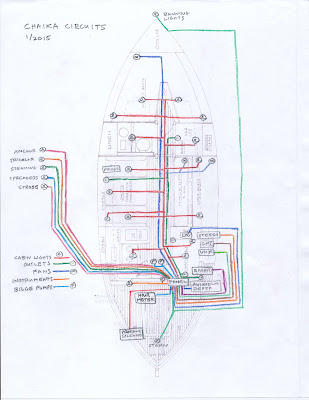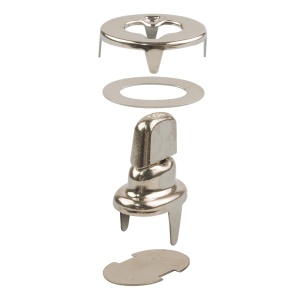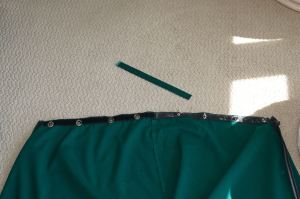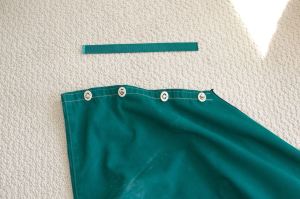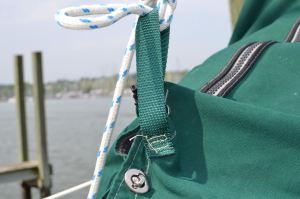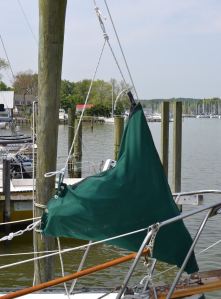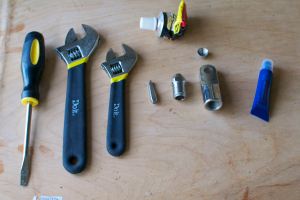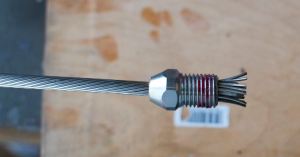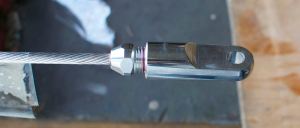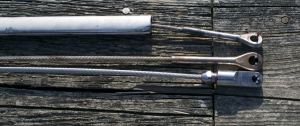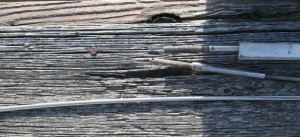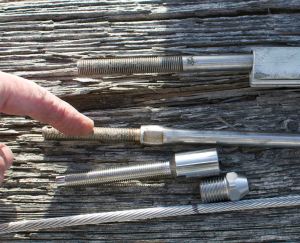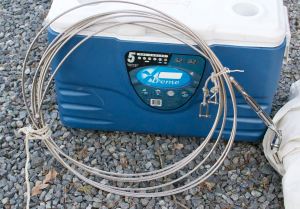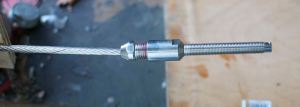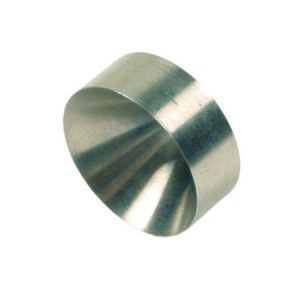Have you ever done fiberglass layup? If you have, then you know how difficult it is to get the wetted cloth to follow a sharp outside corner tightly, with "sharp" being a variable depending on how heavy the cloth is. It tends to spring back, leaving a gap underneath.
Well, boat manufacturers have the same problem you do. And on Eolian, there was a place where the cloth pulled away from the gelcoat-sprayed mold corner, leaving a gap between the gelcoat and the cloth. This revealed itself over the years by the gelcoat cracking up in the bottom of what was now an inside corner, because it was unsupported.
The problem area was on the aft deck, where the coach house meets the deck. Sadly, I did not take a "before" picture... but this one shows the extent of the area to be repaired after I ground out all the loose gelcoat flakes with my trusty Dremel tool (the perfect tool for this job!).
Now, gelcoat is formulated for application by spraying. That means that it is quite fluid, tho the thixotropic agents included mean that when you stop disturbing it, it stays put (unlike epoxy, which continues to run and drip, seemingly forever). But that fluidity makes it quite difficult to control the application accurately. I mixed the gelcoat in a small cup with a tongue depressor and then used that same tongue depressor as an applicator - the radius of the end was close to the radius of the inside corner of the repair area, if I tilted the stick at the right angle.
After the gelcoat had gone off I sanded it using 220 grit wet/dry sandpaper (wet), a small piece wrapped around the end of another tongue depressor, to knock down the areas that needed to be flat. For the radius in the corner Jane donated an old Chap Stick container, which turned out to be a pretty close fit. Sanding is tricky. You want to knock down the high spots and get nearly level with the surrounding area, but you don't want to cut flush until you are working on the final coat. The original gelcoat, tho much thicker than a paint layer would be, is quite thin and easily sanded thru. So you only want to sand flush once.
Because of the fluidity of the gelcoat, it took several applications to get the surface brought up (oh, how I wish that there was a gelcoat formulation even as stiff as, say, Greek yogurt!). In the beginning I applied a lot, but at the end just a dab here and there to fill the hollow spots.
For final finishing I went over the area with 400 grit wet/dry (wet), and then used some polishing compound. It comes out as shiny as a factory finish.
 |
| And done. |
Again, major kudos to Fiberlay for such an amazingly perfect color match. If you can see any color difference at all in the picture, it is because in the area where I was working the oxidized gelcoat got cleaned off, brightening the color.
(And yes, replacing that fixed port is on the list.)

